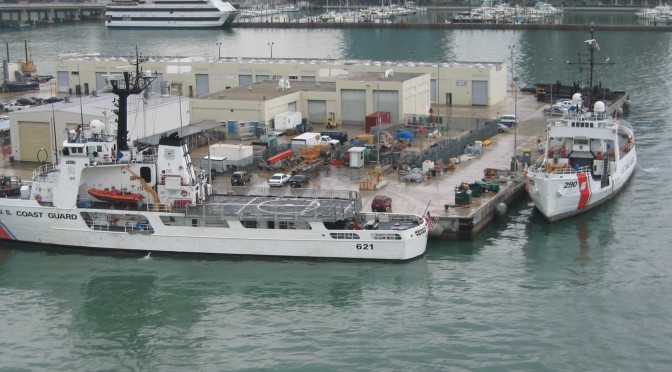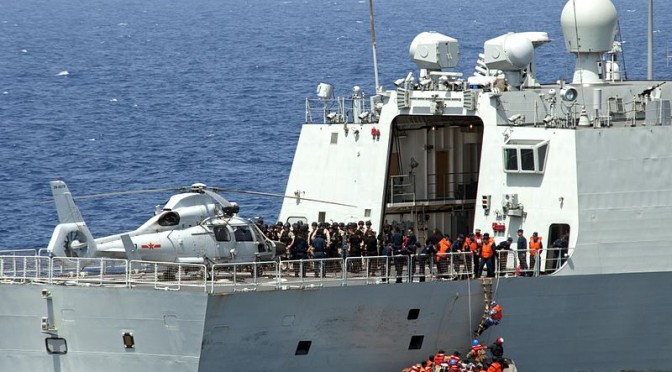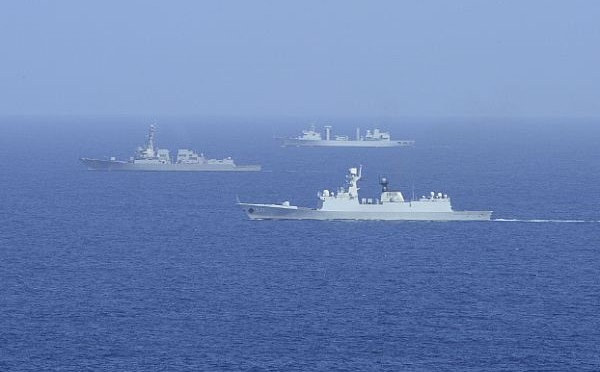Post by Chuck Hill
Why does the Coast Guard seem to be losing the budget battle within the Department of Homeland Security (DHS)? While funding for the Department has grown, the Coast Guard budget has in fact declined in real terms. I suspect it has a lot to do with perceptions of a miss-match between DHS missions and Coast Guard missions.
Congress attempted to address this perceived mismatch in the Homeland Security Act of 2002 by requiring an annual report of resources allocated to DHS missions and non-DHS missions, to ensure non-DHS missions are not ignored. I will refer to this “Annual Review of the United States Coast Guard’s Mission Performance” (pdf) as the Performance Report.
It is an interesting report, but it does have significant weaknesses, largely stemming from the use of undifferentiated and undefined “resource hours” as a measure of effort. I reviewed a report back in 2010 and offered my criticisms, which have not changed here, here, and here.
Unfortunately, I think this report may be part of the problem, in that it defines several Coast Guard missions as “non-DHS,” and it gives the impression, erroneously I believe, that roughly half of the Coast Guard’s budget goes for things outside the DHS charter.
Of the eleven Coast Guard missions, six were regarded as Non-Homeland Security missions: SAR, AtoN, Living Marine Resources, Marine Environmental Protection, Marine Safety, and Ice Operations.
The five Homeland Security missions are Ports, waterways, and coastal security, Drug Interdiction, Undocumented Migrant Interdiction, Defense Readiness, and Other Law Enforcement (primarily Foreign Fisheries Enforcement).
But these distinctions are fallacious.
The Department views its own missions as:
- Preventing Terrorism and Enhancing Security
- Securing and managing our borders
- Enforcing and administering our Immigration laws
- Safeguarding and securing cyberspace
- Ensuring resilience to Disaster
NON-DHS MISSIONS: All these missions, at least in some respects, support DHS missions.
SAR: A robust SAR organization is clearly a necessary foundation for “Ensuring resilience to Disaster.” What were Katrina and Sandy but huge SAR cases? SAR command posts and communications are the skeletal structure upon which Disaster Response is based. After all, every SAR case is really a response to a disaster of some dimension. If the 3,000 plus people the CG saves every year had died in a single incident, it would have been a disaster on the order of 9/11.
AtoN: Most of the population lives near the coast or inland waterways. Most depend heavily on marine transportation and in many cases fishing. When there is a disaster, restoring safe navigation is a high priority both for bringing in assistance and for recovery.
Marine Environmental Protection (MEP): The Deepwater Horizon was a disaster. MEP regulation attempts head off disasters and mitigate its effects, that is “ensuring resilience to disaster” plus offshore and port-side energy infrastructure are potential terrorists targets.
Marine Safety: Marine Safety is designed to prevent marine disasters. A sunken cruise ship could be a disaster on the order of 9/11. Marine Safety standards tends to mitigate the effects of a terrorist attack on marine targets
Living Marine Resources: Destruction of valuable marine resources can actually be as disaster for the economy of some communities.
Ice Operations: Domestic icebreakers can prevent flooding. We recently had a case where a community in Alaska would have been left without fuel, if an icebreaker had not opened a path for delivery.
THE UNLISTED COAST GUARD MISSION:
Safeguarding and securing cyberspace: It is not one of the Coast Guard’s eleven statutory missions, but this is in fact one of the Commandant’s key priorities. Still it is not addressed in the Coast Guard’s annual Performance Report.
THE NON-DHS DHS MISSIONS: Two missions listed as DHS missions in fact are of little interest to the department, and performance goals (which are themselves perhaps inadequate) in these two areas are not being met.
Defense Readiness: Apparently the Coast Guard is doing more for Defense Readiness now than it was before 9/11, but really little has been done in terms of adapting resources for wartime roles. Additionally, a potentially major Coast Guard contribution to defense readiness, the major cutters, are being replaced at such a slow rate, the fleet continues to age, making it less reliable.
Other Law Enforcement (primarily foreign fisheries): DHS probably has little interest in this. This mission also suffers from the aging of the cutter fleet, and additionally the very large US EEZ in the Western Pacific has been largely ignored.
Problems in DHS: I do think the Departments placement of priority on counter-terrorism over more general disaster response is misplaced, and this is another source of problems.
CONCLUSION:
I will quote my closing paragraph from my 2010 post,
When it comes time to decide the Coast Guard budget, I would suggest Congress take a different approach. Consider return on investment. If you like the return you are getting from the Coast Guard now, invest more. Don’t say, “Agency ‘X’ isn’t working, we need to put more money into that.” “The Coast Guard, is doing a good job with their current budget so we don’t need to give them any more.” I don’t quote scripture very often. I’m not religious, but there is some wisdom there. Check out the story of the “good and faithful servant” Matthew 25:14-30.
This article can be found in its original form on Chuck Hill’s CG blog. Chuck retired from the Coast Guard after 22 years service. Assignments included four ships, Rescue Coordination Center New Orleans, CG HQ, Fleet Training Group San Diego, Naval War College, and Maritime Defense Zone Pacific/Pacific Area Ops/Readiness/Plans. Along the way he became the first Coast Guard officer to complete the Tactical Action Officer (TAO) course and also completed the Naval Control of Shipping course. He has had a life-long interest in naval ships and history.









 This is the story of Christopher Nunn in his own words, the Captain in command of M Company 42 Commando, who was sent to South Georgia as part of Operation Paraquet – the first stage of the Falklands and the opening salvo and statement of intent that would set the stage for all that was to come. It was also possibly the most risky operation of the war, as the British forces deployed were completely self-dependent with no possibility of support.
This is the story of Christopher Nunn in his own words, the Captain in command of M Company 42 Commando, who was sent to South Georgia as part of Operation Paraquet – the first stage of the Falklands and the opening salvo and statement of intent that would set the stage for all that was to come. It was also possibly the most risky operation of the war, as the British forces deployed were completely self-dependent with no possibility of support.